
- •COURSE CONTENTS
- •Reservoir Rock Characteristics
- •Porosity
- •Factors Affecting Porosity
- •Total and Effective Porosity
- •Primary and Secondary Porosity
- •Permeability
- •Linear Flow
- •Radial Flow
- •Averaging Permeability (Parallel Sand)
- •Averaging Permeability (Series Sand)
- •Exercise 1
- •Permeability Measurement
- •Slippage Phenomenon during Gas Permeability Measurements
- •Klinkenberg correction
- •Rock and Fluid Interaction
- •Interfacial Tension
- •Wettability
- •Capillary Pressure
- •Relative Permeability
- •STOIIP
- •Exercise 2
- •Type of Reservoir
- •Recovery
- •Drive Mechanism
- •Solution Gas Drive
- •Gas Cap Drive
- •Water Drive
- •Type of Water Drive
- •Gravity Drainage
- •Combination
- •Secondary Recovery
- •Tertiary Recovery (EOR)
- •Thermal EOR
- •Chemical EOR
- •Miscible Gas Flooding
Factors Affecting Porosity
Grain size: grain size has no effect on porosity. Well rounded sediments that are packed into the same arrangement generally have porosities from 26% to 48% depending on the packing.
Sorting: Well sorted sediments generally have higher porosities than poorly sorted sediments for the simple reason that if a sediment is a range of particle sizes then the smaller particles may fill in the voids between the larger particles.
Grain shape: Irregularly shaped particles tend not to pack as neatly as rounded particles, resulting in higher proportions of voidspace.
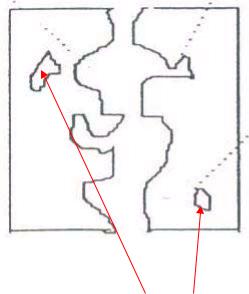
Total and Effective Porosity
Total porosity is defined as the ratio of the volume of all pores to the bulk volume of a material, regardless of whether or not all of the pores are interconnected.
Effective porosity is defined as the ratio of the interconnected pore volume to the bulk volume.
Isolated pores
Primary and Secondary Porosity
Primary porosity is defined as a porosity in a rock due to sedimentation process.
Secondary porosity is defined as a porosity in a rock which happen after sedimentation process, for example fracturing and re-crystallization.
Porosity Measurement
Boyle’s Law porosimeter. Wet and dry weight method. Summation of fluids.
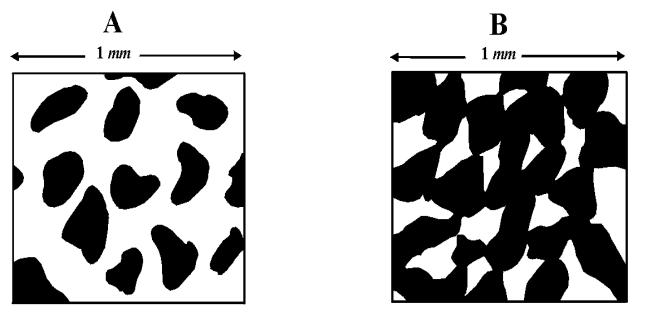
Permeability
The permeability of a rock is a measure of the ease with which fluids can flow through a rock. This depends on how well the pore spaces within that rock are interconnected.
Good Permeability |
Poor Permeability |
Permeability is a measure of the ability of a porous material to transmit fluid under a potential gradient.
The unit for permeability (k) is darcy named after a French scientist, Henry Philibert Gaspard Darcy who investigated flow of water through filter beds in 1856.
1 Darcy = 0.987 x 10-12 m2.
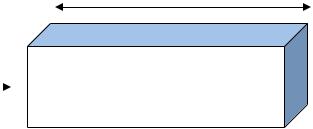
The general darcy’s equation is:
L
|
|
Q |
|
|
|
A |
|
||||
|
|
|
|
|
|
|
|
|
|
||
|
|
|
|
|
|
|
|
|
|
||
|
|
|
|
|
|
|
|
|
2 |
|
|
|
|
|
|
|
|
P1 |
P |
|
|
||
Q |
|
|
|
|
|
|
where: |
Q |
= |
flowrate (cm3/sec) |
|
= − |
k dP |
|
|
|
|
||||||
A |
|
|
|
|
K |
= |
permeability (darcy) |
||||
|
|||||||||||
|
|
µ dL |
A |
= |
cross section area (cm2) |
||||||
|
|
|
|
|
|
|
|
||||
|
|
|
|
|
|
|
|
µ |
= |
fluid viscosity (cp) |
|
|
|
|
|
|
|
|
|
P |
= |
pressure (atm) |
|
|
|
|
|
|
|
|
|
L |
= |
length (cm) |
|
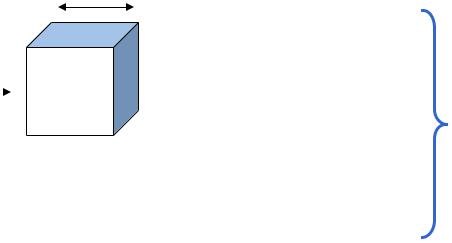
L
Q = 1cm3/sec
Q |
|
|
A |
A = 1cm2 |
|
|
|
|
|
|
µ = 1 cp |
|
P1 |
P2 |
P = 1atm |
||
|
|
|
|
|
|
|
|
|
|
|
L = 1cm |
Find k ?
1 darcy is defined as the permeability that will permit a fluid of 1 centipoise viscosity to flow at a rate of 1 cubic centimeter per second through a cross sectional area of 1 square centimeter when the pressure gradient is 1 atmosphere per centimeter.
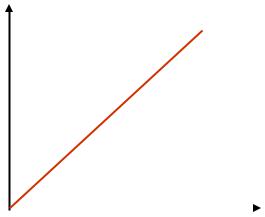
There are four conditions that are required for this equation to be valid:
Laminar flow.
No accumulation.
Single-phase liquid flow.
The porous media is not reactive with the flowing fluid.
Plot of Q/A against dP/dL
should yield a single straight |
Q/A |
|
|
|
|
||
line as shown below where |
|
|
|
|
|
k/µ |
|
the slope = k/µ = fluid |
|
|
|
|
|
||
mobility |
|
|
|
|
|
dP/dL |
|
|
|
|
